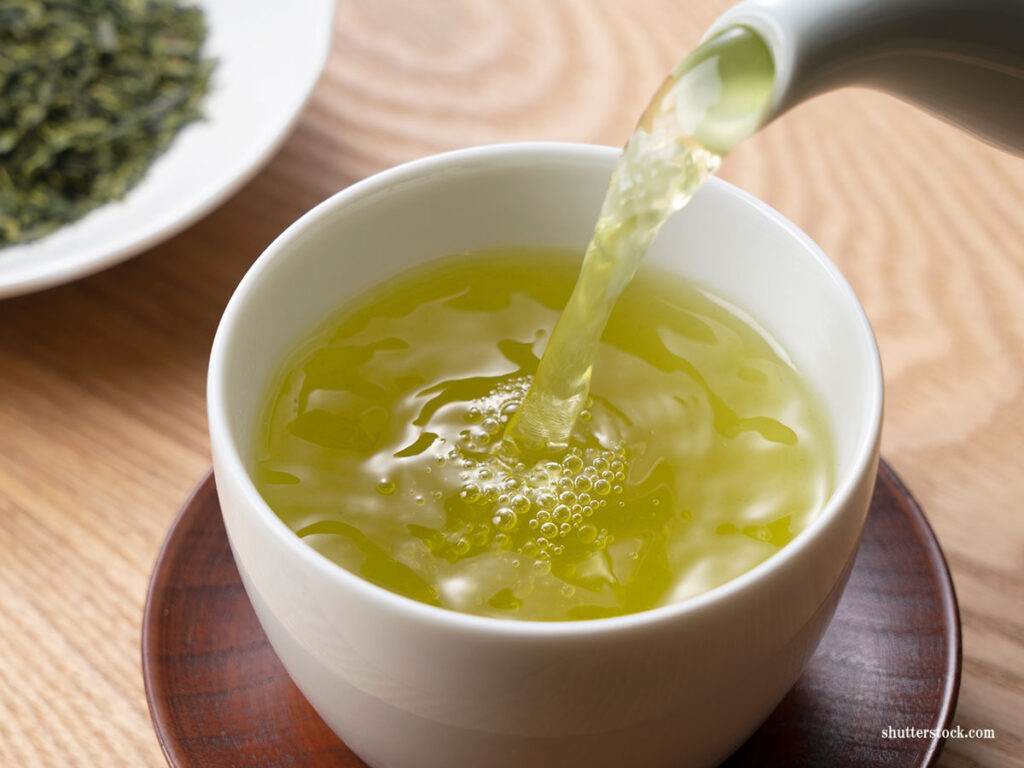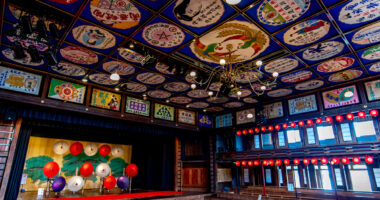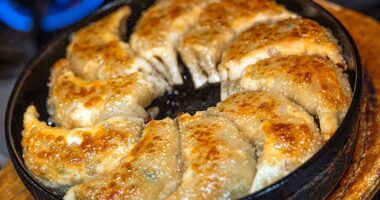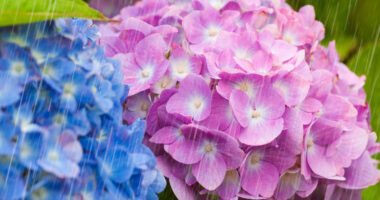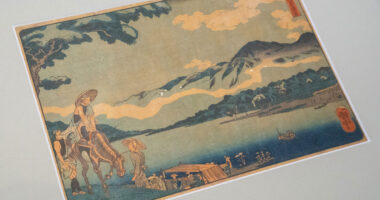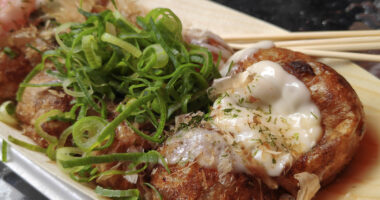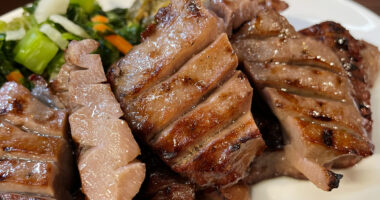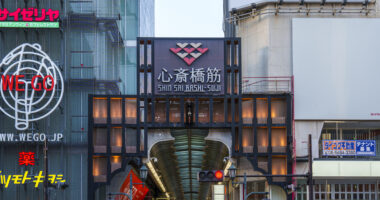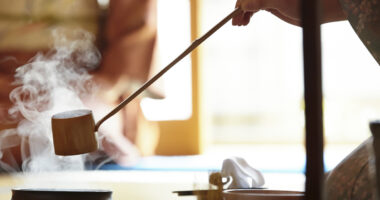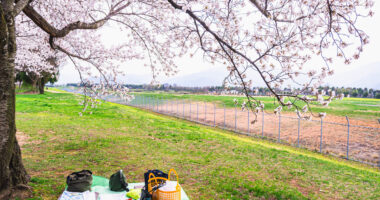As exemplified by matcha, Japan is home to a wide variety of traditional beverages that have been passed down through generations.
Once enjoyed mainly in limited settings like the home or chashitsu (traditional tea rooms), many of these drinks are now readily available in bottled or canned form at convenience stores and vending machines across the country.
It’s never been easier to experience the taste of history in everyday life!
In this article, we’ll introduce nine traditional non-alcoholic Japanese beverages that are widely loved across the country, highlighting their unique flavors and where you can find them.
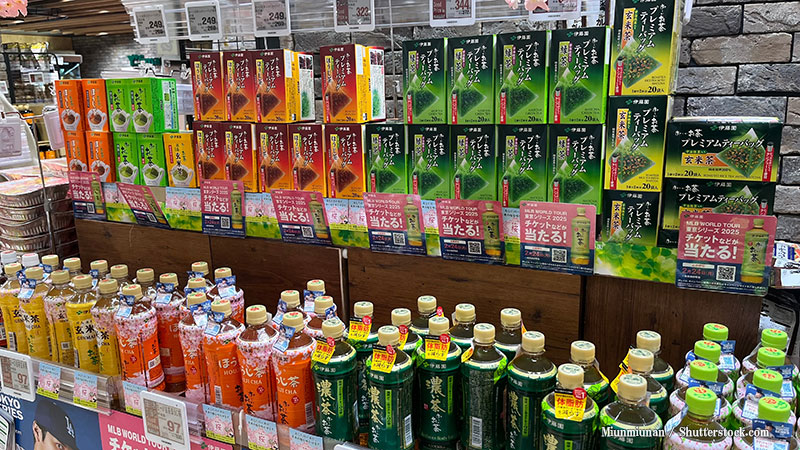
Photo for illustrative purposes
Sencha
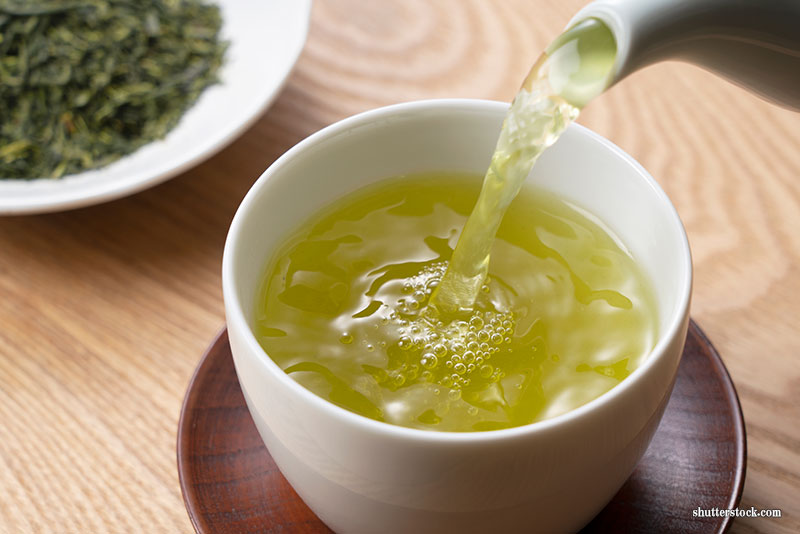
Sencha
One of the most commonly enjoyed types of Japanese tea is sencha, a variety of green tea.
When Japanese people use the word ocha (“tea”), it can refer to tea in general, but often specifically means sencha—a reflection of how deeply it’s woven into daily life.
Sencha is made by steaming and drying freshly picked tea leaves. It’s known for its clean finish and well-balanced flavor, combining both bitterness and umami. It pairs exceptionally well with Japanese meals, making it an ideal table tea.
It’s available year-round in a wide range of formats—from chilled bottles to warm canned versions sold in vending machines.
You can easily find it in convenience stores and supermarkets, and nowadays there are even options with reduced caffeine or from organic cultivation.
With its blend of simplicity and depth, sencha is the quintessential Japanese tea—perfect for taking a brief, calming break during a busy day.
| Where to buy | Availability |
|---|---|
| Convenience stores | widely available in bottles or cans |
| Supermarkets | available not only in bottles and cans but also as powder or tea bags |
| Vending machines | occasionally sold under the name “sencha,” but not commonly seen. |
Bancha
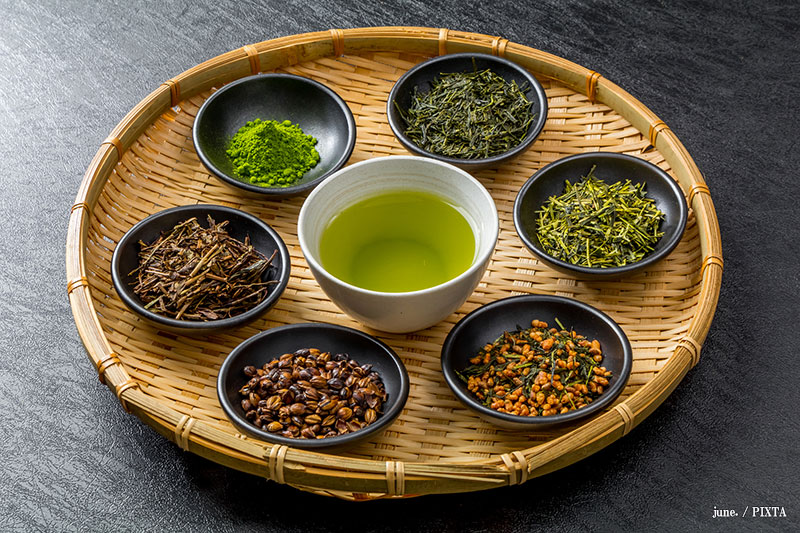
Photo for illustrative purposes
The first tea leaves picked in a season are called shincha (new tea).
Bancha is made from the leaves that grow after the first harvest, and its flavor and production methods can vary by region.
It has a light, clean taste with low astringency and a smooth mouthfeel—perfect for after meals or before bedtime when you want to relax.
Although it’s not often sold in bottled form, loose tea leaves and tea bags are widely available at supermarkets.
Because it’s rarely found in convenience stores or vending machines, supermarkets are your best bet for purchasing bancha.
| Where to buy | Availability |
|---|---|
| Convenience stores | rarely seen |
| Supermarkets | occasionally sold as loose leaves or in tea bags, but not commonly found |
| Vending machines | Sometimes available as a region-specific product, but generally rare |
Hōjicha
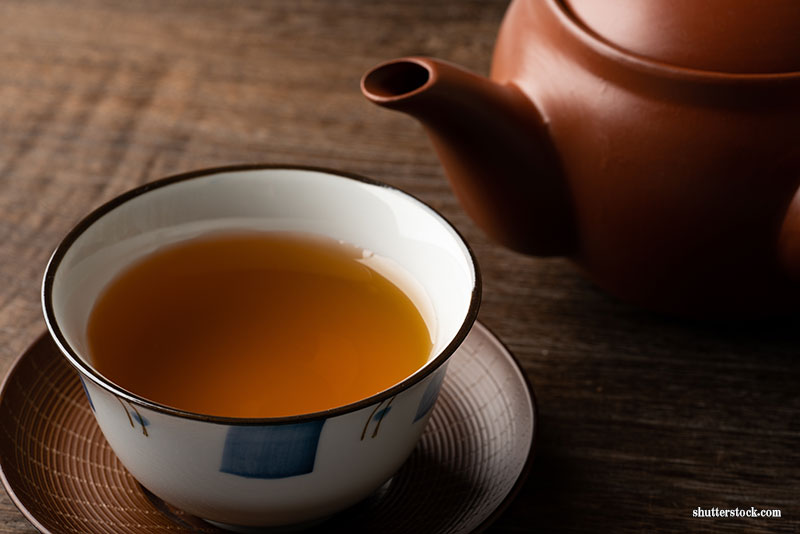
Hojicha
Hōjicha is a tea made by roasting tea leaves such as sencha or bancha over high heat, which turns the leaves a beautiful reddish-brown color.
It features a fragrant, toasty flavor and a clean aftertaste, with less bitterness and comparatively lower caffeine than sencha or bancha.
Easy to drink before, during, or after meals, it can be enjoyed comfortably throughout all seasons.
Additionally, hōjicha’s pleasant aroma makes it popular as an ingredient in sweets.
It’s also often used in ice cream, pudding, cakes, and other desserts, where its toasty notes add a subtle Japanese flavor that pairs well with Western-style sweets.
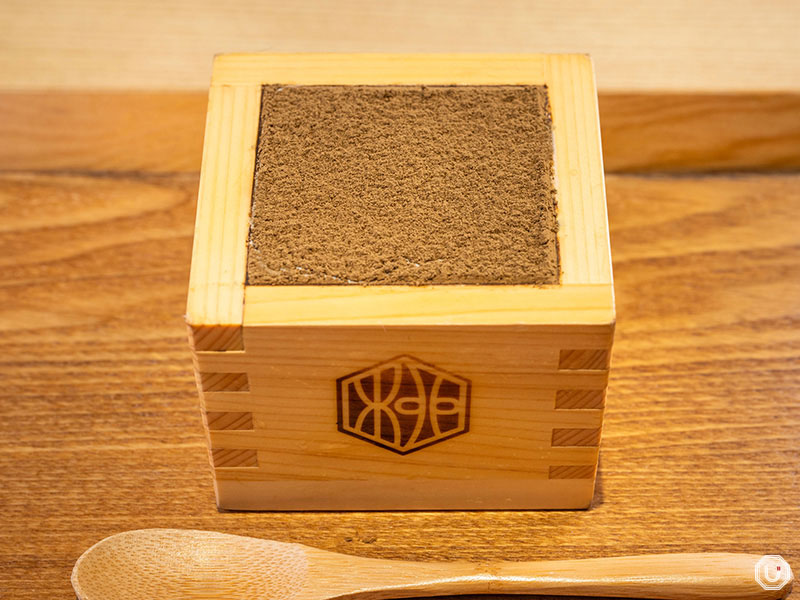
“Hojicha Tiramisu” at Yanagiya Chaya Asakusa
For example, one of the standout desserts at “Yanagi Chaya Asakusa” in Asakusa is their Hojicha Tiramisu, which blends the rich aroma of roasted green tea with the creamy tartness of mascarpone.
The fragrant notes of hojicha are beautifully elevated when paired with the smooth, tangy mascarpone cream.
| Where to buy | Availability |
|---|---|
| Convenience stores | widely available in plastic bottles or cans. |
| Supermarkets | in addition to plastic bottles and cans, hōjicha is also widely sold as loose leaves and tea bags. |
| Vending machines | widely available in plastic bottles or cans. |
Genmaicha
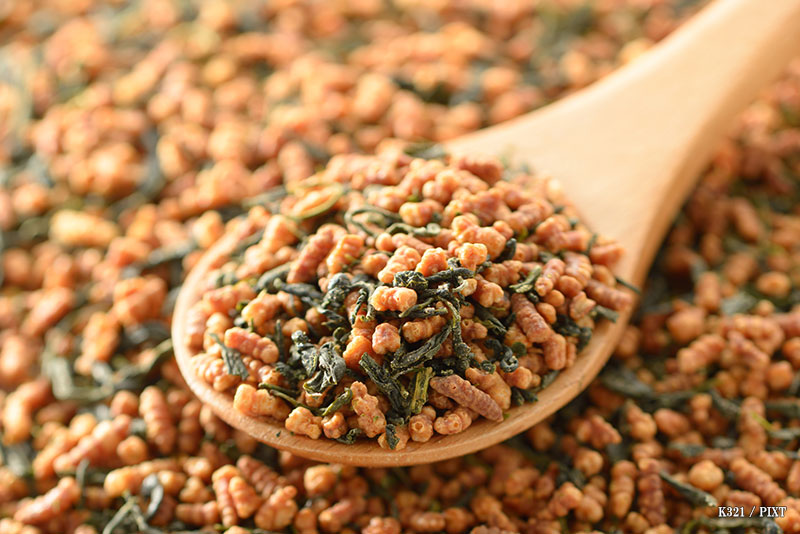
Genmaicha
Genmaicha is a blend of genmai roasted rice and green tea, characterized by its rich aroma.
Sencha leaves are often used, creating a perfect harmony between the refreshing taste of green tea and the roasted fragrance of genmai
With low bitterness and easy drinkability, it is popular among people of all ages. Its gentle flavor is especially suitable during meals. It also refreshes the palate after oily dishes, making it a great match not only with Japanese cuisine but also Western food and fried dishes.
| Where to buy | Availability |
|---|---|
| Convenience stores | Available in plastic bottles |
| Supermarkets | In addition to plastic bottles and cans, genmaicha is also widely sold as loose leaves and tea bags |
| Vending machines | Though less common, it is sometimes available |
Gyokuro
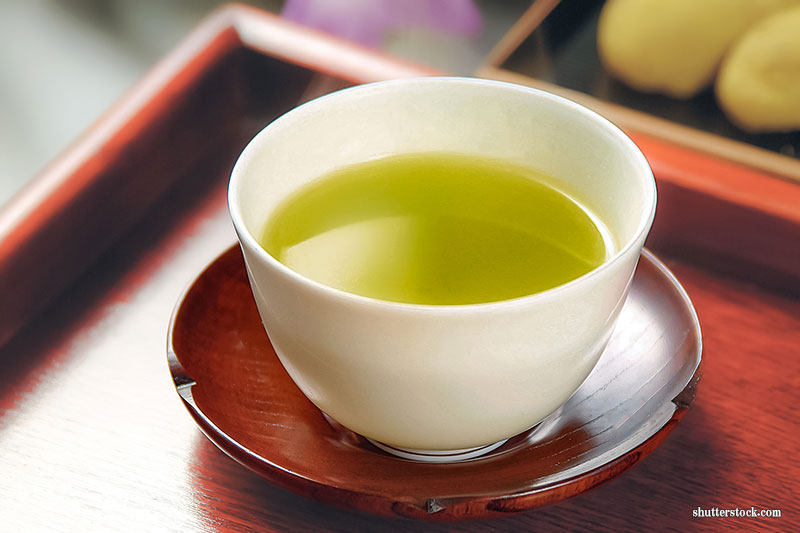
Gyokuro
Gyokuro is considered one of the highest-grade Japanese teas, known for its strong umami and mellow sweetness.
The tea leaves are grown using a method called hifuku saibai (covered cultivation), where they are shaded from sunlight before harvest. This reduces bitterness and produces a deeper, more refined flavor.
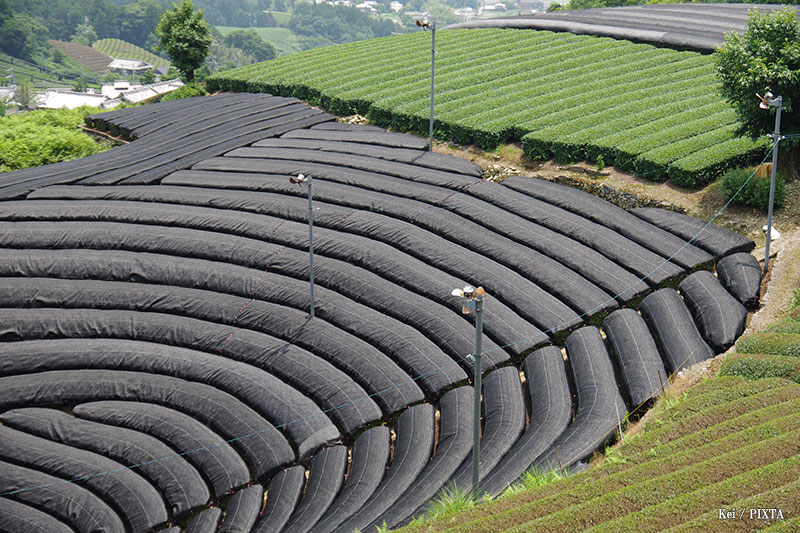
Image of covered cultivation (shaded growth method)
Unlike sencha, the smooth and elegant taste of gyokuro<—often described as silky on the palate—makes its status as a premium tea well-deserved. It's typically enjoyed slowly and carefully, steeped one cup at a time, making it a favorite for special moments.
Due to its rarity and higher price point, gyokuro is rarely sold in bottled or canned form for everyday consumption. It’s primarily available at specialty tea shops or in the loose-leaf section of well-stocked supermarkets.
Though you might occasionally find it as loose tea or in tea bags at supermarkets, it is generally not available in convenience stores or vending machines.
| Where to buy | Availability |
|---|---|
| Convenience Stores | rarely available |
| Supermarkets | occasionally available as loose tea or tea bags, but not common |
| Vending machines | rarely available. |
Matcha
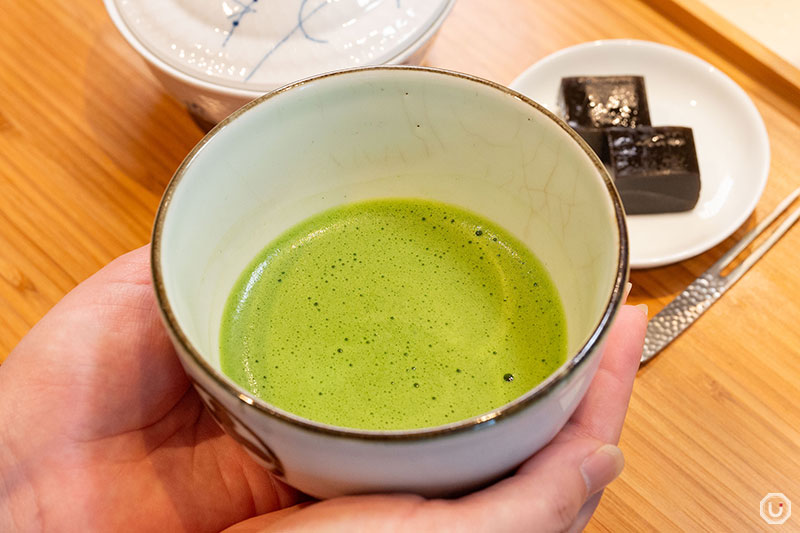
Matcha is a traditional Japanese tea made by whisking finely ground green tea powder into hot water.
Originally indispensable in the world of tea ceremony, matcha can now be enjoyed at many places without the need to attend a formal tea gathering.
The time spent savoring carefully whisked matcha casually yet thoughtfully is a moment to feel the spirit of Japanese culture.
Additionally, more convenient options such as stick-type powdered matcha and matcha-infused drinks are commercially available. Matcha is widely used not only as a beverage but also as an ingredient in sweets like ice cream, lattes, and cakes.
Bottled matcha drinks can be found in supermarkets and some convenience stores, and matcha flavored-products like matcha lattes are also popular.
Authentic powdered matcha used for tea ceremonies is available at specialty shops such as “Kaminari Issa” in Asakusa, as well as in select supermarkets, but it is generally not sold in vending machines or convenience stores.
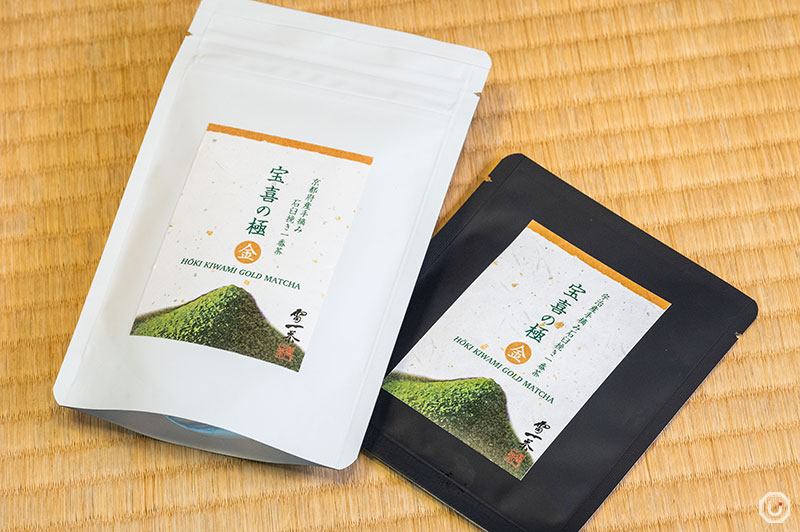
Powdered matcha available at Kaminari Issa in Asakusa
| Where to buy | Availability |
|---|---|
| Convenience stores | Authentic matcha is rarely available; matcha latte and similar products are more common |
| Supermarkets | May carry powdered forms of matcha |
| Vending machines | Authentic matcha is rarely available; matcha latte and similar products are more common |
Mugicha

Photo for illustrative purposes
Mugicha is a roasted barley tea known for its toasty aroma and refreshing, clean flavor.
Free of caffeine and gentle on the body, it’s a beloved beverage across all generations—from babies to the elderly.
Enjoyed chilled in summer and warm in colder seasons, mugicha is a truly versatile tea that plays an active role year-round.
Its smooth, toasty flavor makes it an ideal mealtime drink. Particularly in summer, it’s a staple in many household refrigerators and appears everywhere—from schools and offices to outdoor gatherings.
Available in various formats like bottles, cartons, and tea bags, it’s easy to find at convenience stores, supermarkets, and vending machines alike.
With rising interest in caffeine-free options, mugicha continues to grow in popularity in recent years.
| Where to buy | Availability |
|---|---|
| Convenience stores | sold in bottles or cartons |
| Supermarkets | widely available in bottles, tea bags, and cartons |
| Vending machines | available in both hot and cold formats, in bottles or cans |
Kuzuyu
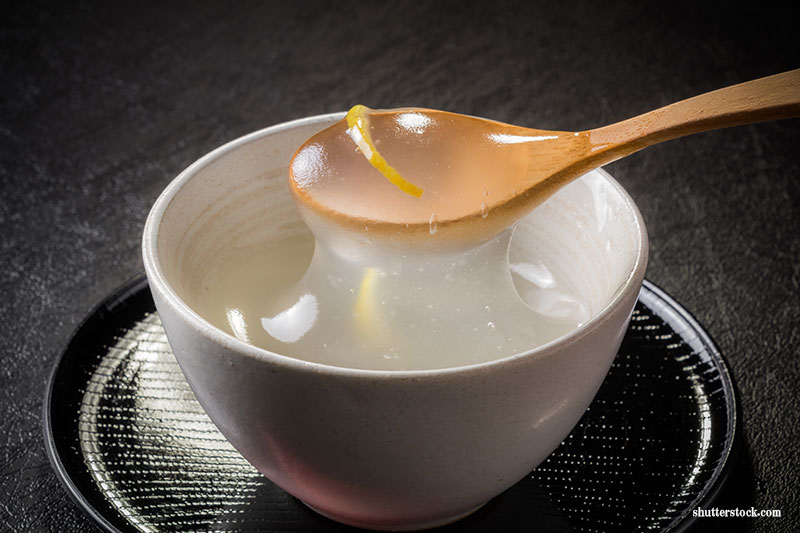
Kuzuyu
Kuzuyu is a traditional Japanese drink made by dissolving kuzuko (kudzu starch) in hot water to create a thick, gently sweet beverage.
Known for its subtle sweetness and smooth, warming texture, it’s a comforting drink that gently warms you from the inside out.
Especially popular during colder months, it’s often consumed when someone has a cold or simply wants to unwind and relax.
Historically enjoyed as a nourishing tonic, kuzuyu is now available in modern variations flavored with matcha, ginger, or yuzu.
It’s typically sold in individually packaged powdered form at supermarkets, where its ease of preparation—just add hot water—adds to its appeal.
Although rarely found in convenience stores or vending machines, many households keep it on hand during winter months.
| Where to buy | Availability |
|---|---|
| Convenience Stores | rarely available, though occasionally stocked in winter |
| Supermarkets | sold in individual powdered packets |
| Vending machines | rarely available, though occasionally stocked in winter |
Amazake
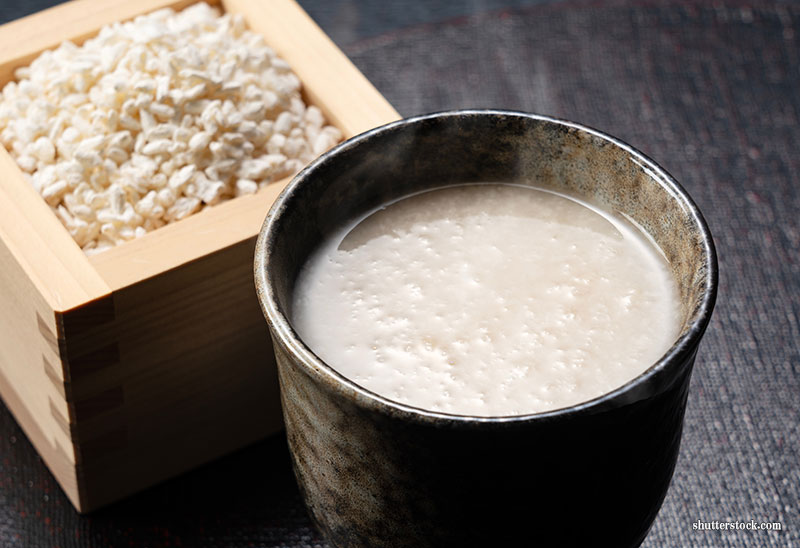
Amazake
Amazake is a traditional Japanese drink made by fermenting rice or rice kōji (a beneficial grain culture), known for its gentle, naturally sweet flavor.
The non-alcoholic variety of amazake has a mild taste that can be enjoyed by both children and adults. In recent years, it has gained renewed attention thanks to growing health-conscious trends.
Amazake is rich in glucose, B vitamins, and amino acids—earning it the nickname “drinkable IV” for its nutritional value.
Its warming properties also make it an ideal beverage for colder seasons.
Traditionally served at shrines during the New Year as a winter custom, amazake is now available year-round in convenient forms like bottled or boxed drinks.
| Where to buy | Availability |
|---|---|
| Convenience stores | sold in cartons or cans |
| Supermarkets | sold in cartons or cans |
| Vending machines | occasionally available in winter or in certain regions, but generally uncommon |
Traditional Japanese beverages, which have long been a part of everyday life, continue to thrive in modern times without losing their charm. They remain a natural and comforting presence in our daily routines.
From teas like sencha and hōjicha that complement meals, to soothing drinks like amazake and kuzuyu that are soothing on the body, the variety and depth of flavors are truly diverse.
What were once enjoyed only on special occasions are now easily accessible at convenience stores, supermarkets, and vending machines.
These traditional Japanese drinks offer a moment of calm amidst our busy lives. Why not pick one that catches your interest and rediscover the subtle richness and comfort they bring to today’s lifestyle?
